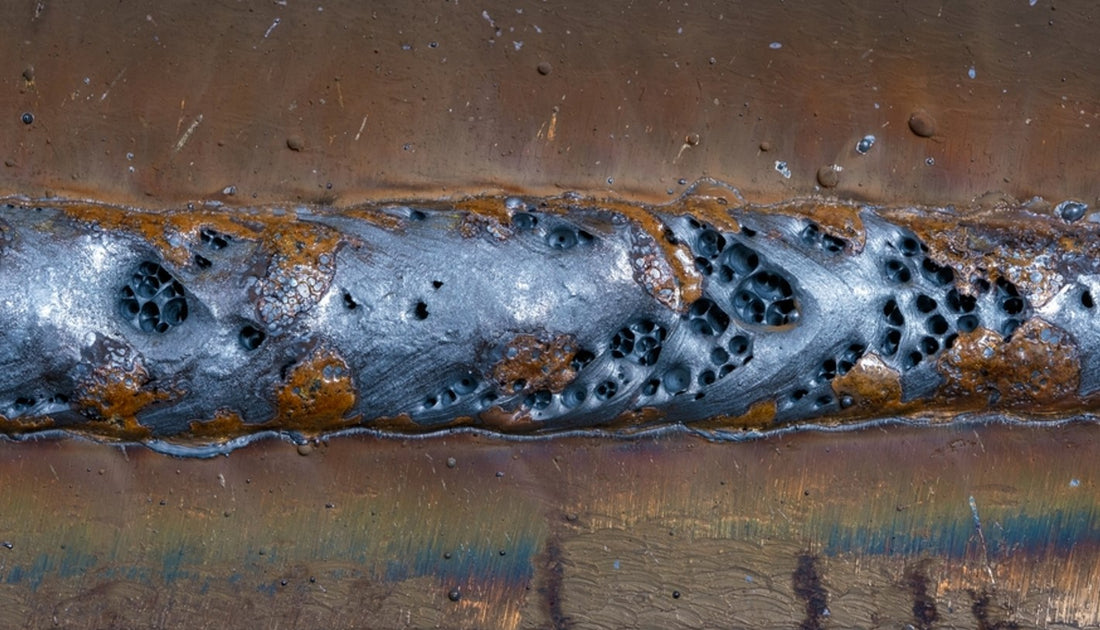The Scientific Research Behind Porosity: A Comprehensive Overview for Welders and Fabricators
Understanding the elaborate mechanisms behind porosity in welding is vital for welders and producers aiming for remarkable craftsmanship. From the structure of the base products to the intricacies of the welding process itself, a plethora of variables conspire to either aggravate or ease the visibility of porosity.
Comprehending Porosity in Welding
FIRST SENTENCE:
Exam of porosity in welding discloses vital insights right into the honesty and top quality of the weld joint. Porosity, identified by the presence of cavities or gaps within the weld metal, is an usual issue in welding procedures. These spaces, if not effectively attended to, can endanger the structural stability and mechanical properties of the weld, causing possible failings in the completed item.

To detect and evaluate porosity, non-destructive testing techniques such as ultrasonic screening or X-ray assessment are often utilized. These techniques permit the identification of internal problems without jeopardizing the integrity of the weld. By analyzing the dimension, form, and circulation of porosity within a weld, welders can make informed choices to improve their welding processes and attain sounder weld joints.

Factors Affecting Porosity Formation
The occurrence of porosity in welding is influenced by a myriad of variables, varying from gas protecting efficiency to the intricacies of welding specification setups. One vital factor adding to porosity formation is poor gas protecting. When the protecting gas, typically argon or carbon dioxide, is not effectively covering the weld pool, climatic gases like oxygen and nitrogen can pollute the molten metal, causing porosity. In addition, the cleanliness of the base products plays a considerable role. Impurities such as rust, oil, or wetness can vaporize during welding, creating gas pockets within the weld. Welding specifications, consisting of voltage, present, travel rate, and electrode type, also impact porosity formation. Utilizing inappropriate setups can generate too much spatter or warmth input, which subsequently can result in porosity. The welding technique used, such as gas steel arc welding (GMAW) or shielded steel arc welding (SMAW), can influence porosity formation due to variations in warm circulation and gas protection. Comprehending and controlling these elements are necessary for lessening porosity in welding procedures.
Results of Porosity on Weld High Quality
Porosity development dramatically endangers the architectural integrity and mechanical buildings of welded joints. When porosity is existing in a weld, it produces spaces or tooth cavities within the product, minimizing the overall stamina of the joint. These gaps serve as anxiety focus factors, making the weld a lot more prone to cracking and failing under tons. The existence of porosity additionally damages the weld's resistance to corrosion, as the Full Report trapped air or gases within deep spaces can react with the surrounding atmosphere, leading to destruction in time. In addition, porosity can impede the weld's capacity to stand up to pressure or impact, further threatening the total quality and integrity of the bonded framework. In essential applications such as aerospace, vehicle, or structural buildings, where security and durability are vital, the harmful effects of porosity on weld high quality can have extreme consequences, stressing the value of minimizing porosity via proper welding methods and procedures.
Methods to Decrease Porosity
Additionally, utilizing the ideal welding specifications, such as the right voltage, present, and travel rate, is crucial in preventing porosity. Keeping a consistent arc length and angle during welding additionally assists lower the probability of porosity.

Moreover, choosing the ideal shielding gas and keeping correct gas flow rates are important in decreasing porosity. Using the proper welding strategy, such as back-stepping or utilizing a weaving activity, can additionally assist distribute warmth uniformly and decrease the chances of porosity formation. Ensuring correct air flow in the welding environment to get rid of any type of prospective resources of contamination is essential for achieving porosity-free welds. By executing these techniques, welders can successfully lessen porosity and produce top quality bonded joints.

Advanced Solutions for Porosity Control
Executing cutting-edge technologies and innovative approaches plays a crucial duty in attaining premium control over porosity in welding procedures. In addition, employing innovative welding techniques such as pulsed MIG welding or customized environment welding can additionally aid reduce porosity problems.
One more sophisticated solution entails making use of advanced Related Site welding devices. Making use of devices with built-in attributes like waveform control and sophisticated power sources can boost weld high quality and reduce porosity risks. Furthermore, the application of automated welding systems with accurate control over specifications can considerably minimize porosity flaws.
In addition, integrating innovative surveillance and inspection technologies such as real-time X-ray imaging or automated ultrasonic screening can assist in spotting porosity early in the welding process, allowing for instant restorative activities. On the whole, incorporating these sophisticated options can substantially boost porosity control and boost the total top quality of bonded parts.
Verdict
In conclusion, recognizing the reference scientific research behind porosity in welding is necessary for welders and makers to generate top notch welds - What is Porosity. Advanced options for porosity control can further improve the welding process and make certain a strong and reliable weld.